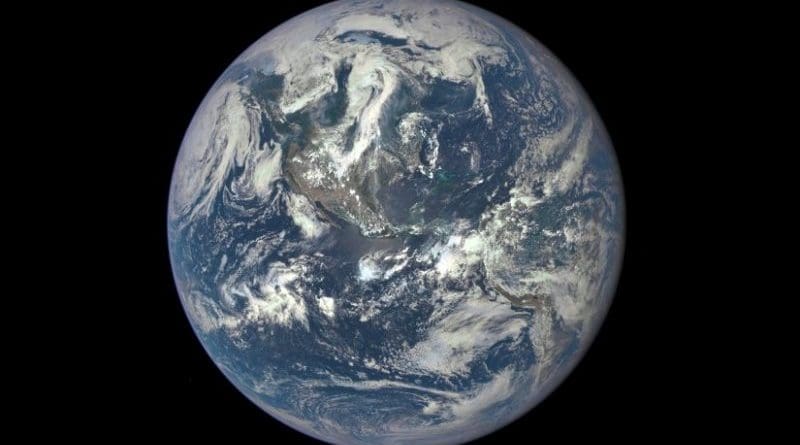Ozone Across Northern Hemisphere Increased Over Past 20 Years
In a first-ever study using ozone data collected by commercial aircraft, researchers from the Cooperative Institute for Research in Environmental Sciences (CIRES) at the University of Colorado Boulder found that levels of the pollutant in the lowest part of Earth’s atmosphere have increased across the Northern Hemisphere over the past 20 years. That’s even as tighter controls on emissions of ozone precursors have lowered ground-level ozone in some places, including North America and Europe.
Tropospheric ozone–ozone between Earth’s surface and 12 to 15 kilometers above Earth–is a greenhouse gas and air pollutant that, at high levels, can harm people’s lungs and damage plants.
In a study published today in the journal Science Advances, the team found an overall increase in ozone levels above the Northern Hemisphere. “That’s a big deal because it means that as we try to limit our pollution locally, it might not work as well as we thought,” said Audrey Gaudel, a CIRES scientist working in the NOAA Chemical Sciences Laboratory and the study’s lead author. She and her colleagues documented the greatest ozone increases in the tropics, Gaudel said, noting that ozone exported from the tropics may be driving increases above other areas of the Northern Hemisphere.
Gaudel and her co-authors, CIRES scientists in NOAA and international colleagues, also found the most striking increases in areas where ozone levels were once lowest: Malaysia/Indonesia, Southeast Asia and India, for example. Those regions had very low ozone values between 1994-2004, and very high levels in recent years, between 2011-2016.
Previous studies could not draw firm conclusions on Northern Hemisphere ozone trends, according to Gaudel, because there are too few long-term monitoring locations and because new satellites with near-global coverage have provided conflicting results on ozone trends.
So the researchers turned to aircraft data from Europe’s In-Service Aircraft for the Global Observing System (IAGOS) program. “Since 1994, IAGOS has measured ozone worldwide using the same instrument on every plane, giving us consistent measurements over time and space from Earth’s surface to the upper troposphere,” Gaudel said. Between 1994 and 2016, commercial aircraft captured 34,600 ozone profiles, or about four profiles each day.
Gaudel and her colleagues used these measurements to calculate changes in tropospheric ozone from the mid-1990s to 2016 above 11 regions in the Northern Hemisphere. They found an overall increase in ozone in all regions where they looked, including four in the mid-latitudes, two in the subtropics, two in the tropics and three equatorial regions. On average, median ozone values had increased by 5% per decade.
In the so-called “lower troposphere,” which is closer to Earth’s surface, ozone has decreased above some mid-latitude regions, including Europe and the United States, where ozone precursor emissions have decreased. The researchers found those reductions were offset by increases higher in the troposphere–with the net result being an overall ozone increase from the surface to 12 km.
To understand what was causing the observed ozone changes, the researchers looked at the emissions inventories of one of the main ozone precursors–nitrogen oxides (NOx)–used as input for the global chemistry transport model MERRA-2 GMI, which reproduces accurately the IAGOS measurements. The model showed that increased anthropogenic emissions in the tropics were likely driving the observed increase of ozone in the Northern Hemisphere.
Next, Gaudel wants to take a closer look at ozone in the tropics. Africa may be emerging as a global hotspot for air pollution precursors, for example, and IAGOS data will let her dig deeper into that continent’s role in recent trends. She’ll also compare tropical ozone measurements from IAGOS, taken above polluted regions, with measurements from the NASA Atmospheric Tomography (ATom) field campaign, which measured trace gases and aerosol particles in more remote, less polluted regions including the tropics. And she’ll look at measurements from TROPOMI, an instrument on board a European Space Agency satellite gathering information on atmospheric composition.
“We want to understand the variability of ozone and its precursors and the impact of polluted regions on remote regions,” Gaudel said. “So we’re using the best tools we have, including IAGOS, ATom data and TROPOMI data, to get profiles and columns of ozone and its precursors from different kinds of human activities and natural sources.”

